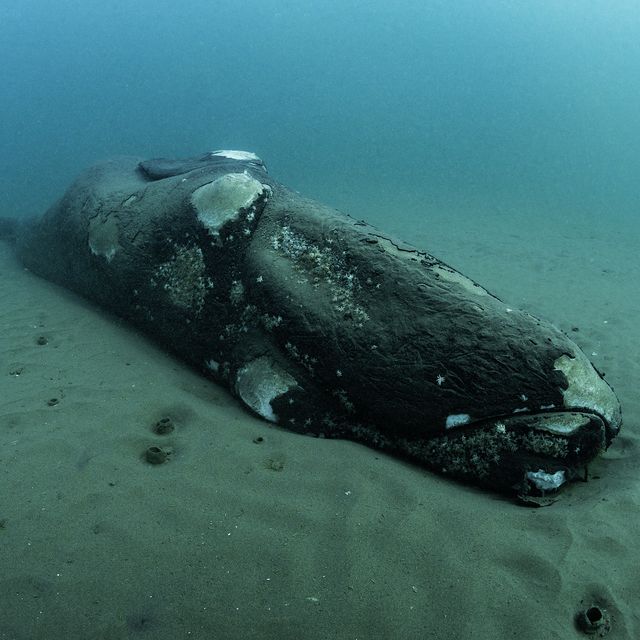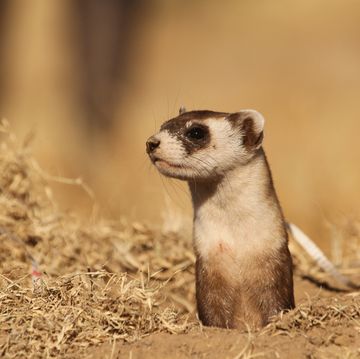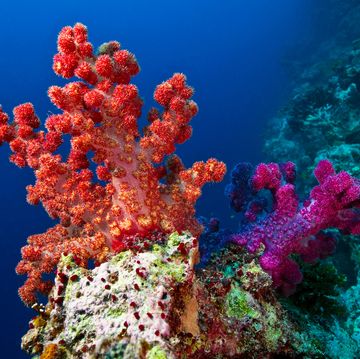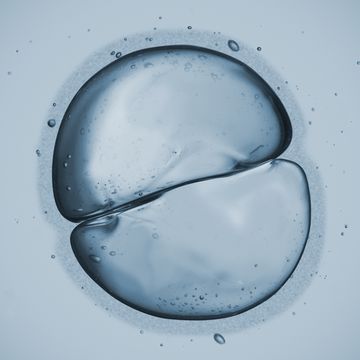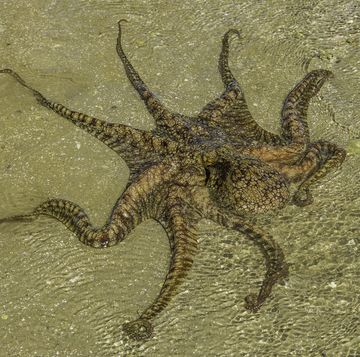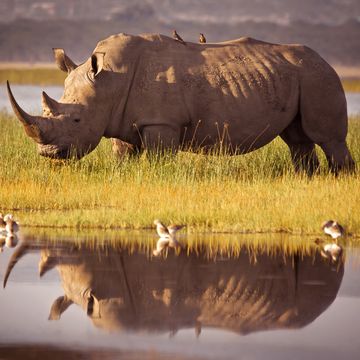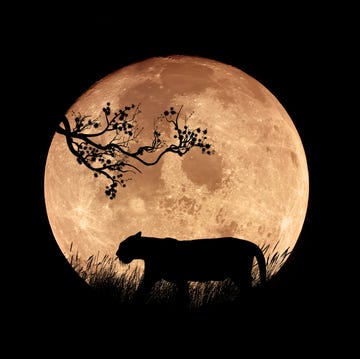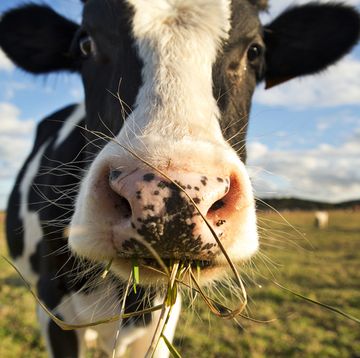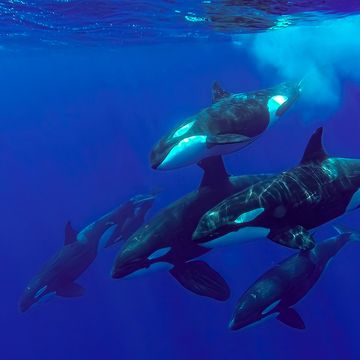- When a large marine mammal like a whale dies, its body drifts to the ocean floor in a process known as whale fall.
- For more than a decade, a succession of sea creatures will live off of the whale’s body by stripping it and burrowing into the bones to find nutrients.
- In a new video by the Ocean Exploration Trust, scientists return to a whale fall off the coast of British Columbia for the third time in a decade to glimpse the life still clinging to a whale’s decomposing skeleton.
We all know about the circle of life (cue The Lion King music), but understanding the life-and-death engine that fuels the Earth and actually seeing it in action are two very different things.
In 2009, researchers from the Monterey Bay Aquarium Research Institute discovered (what is likely) the 16-foot-long carcass of a gray whale (Eschrichtius robustus) decomposing at the bottom of the Clayoquot Slope off the coast of British Columbia. The biological journey of a dead whale’s body to its deep sea resting place—a process known as “whale fall”—is vital for the survival of the creatures who live in these food-poor regions of the ocean.
The whale’s decomposing body is located at what is called the Clayoquot Slope Bullseye site, where Ocean Networks Canada (ONC) scientists monitor methane gas escaping the seafloor. In 2012 and 2020, ONC scientists took brief detours to revisited the site—located some 4,100 feet below the ocean’s surface—to document the growing sea community living among the whale’s skeleton.
ONC, along with Ocean Exploration Trust’s (OET) EV Nautilus, returned to the site in 2023 to find the skeleton still teeming with life nearly 15 years after the carcass was discovered on the seafloor. Thankfully, they uploaded footage of their incredible discovery to YouTube.
“The skeleton supports a rich benthic fauna (organisms that live near the seafloor), including many invertebrates and a few fish species, such as Cocculina craigsmithi (gastropod), Mitrella (Astyris) permodesta (bucinoid gastropod), Ilyarachna profunda (isopod), Paralomis multispina (crab), Coryphaenoides acrolepis (rattail fish), and Lamellibrachia cf. barhami (tube worms),” OET writes in a blog post about the recent expedition. “These tube worms, likely the same individuals seen in 2009, are still making a home on the left jaw bone of the whale, which is remarkable.”
A whale’s body decomposes in three stages—Mobile Scavenger, Enrichment Opportunist, and Sulfophilic—and each stage provides its own benefits to a succession of deep sea creatures.
In 2019, for example, scientists from Monterey Bay National Marine Sanctuary discovered a fresh whale fall containing eelpouts stripping the skeleton of blubber while also providing sustenance for deep sea octopuses during the Mobile Scavenger stage. Eventually, burrowing creatures will move in during the Enrichment Opportunist stage until bacteria break down the bones and converts the embedded lipids into sulfur during the final Sulfophilic stage.
This year’s expedition, which also conducted a photogrammetry survey, will add to the existing data from previous journeys to the site and provide marine biologists with an incredible dataset detailing the entire life-supporting cycle of whale falls.
In the depths of the ocean, as well as in every other ecosystem across the world, death is a beginning. After all, a circle has no end.
Darren lives in Portland, has a cat, and writes/edits about sci-fi and how our world works. You can find his previous stuff at Gizmodo and Paste if you look hard enough.
